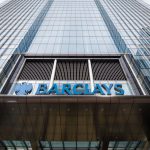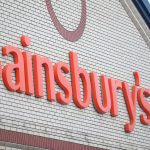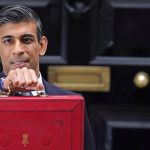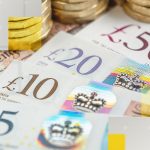Anyone searching for indicators that life is returning to normal in the UK could do worse than look at two data releases today.
The first showed that, according to the Nationwide Building Society, house prices rose this month at their fastest clip since November 2004.
The pandemic has left the UK’s mania with housing and obsession with house prices intact.
The second came from the Bank of England and confirmed that in May, for the first time since last August last year, consumers borrowed more as consumer credit than they repaid – with net borrowing coming in at £280m.
The Bank said the increase in net consumer credit reflected an additional £0.4bn in forms of consumer credit such as car dealership finance and personal loans, although credit card lending remained weak compared to pre-pandemic levels, with a net repayment of £0.1bn.
Net mortgage borrowing, meanwhile, jumped to an unexpectedly strong £6.6bn during May, up from £3bn in April, but below the record of £11.4bn seen in March.
So what’s going on?
Firstly, it is clear that the opening on non-essential retail on 12 April and the further easing of COVID restrictions on 17 May encouraged some Britons to go out and spend more on clothes, dining out and leisure activities.
However the chances are this may have been largely funded by savings that were built up during the pandemic because net credit card lending fell during the month.
So the likelihood is that the increase in borrowing has been driven more by “big ticket” purchases such as cars, furniture or home improvements that were put on hold while the economy was in lockdown.
That would certainly tally with some of the more buoyant trading statements seen from a number of companies recently.
They include Kingfisher, the owner of the UK’s biggest do-it-yourself retailer B&Q, which said last month that sales and profits for the first half of its financial year would be better than expected.
Similarly Howden Joinery, the UK’s largest supplier of kitchens and joinery products to the building trade, issued an upbeat statement at the end of April.
A number of its directors have been buying the company’s shares in recent weeks – always a sign of confidence.
Some of the most positive trading updates of all, however, have come from some of the quoted motor dealers.
Each of Vertu Motors, Marshall Motors and Lookers have, during the last week, told investors that recent trading has been better than expected, with Marshalls saying last Friday it expects to report “an exceptionally strong first half performance” and Lookers speaking on Monday of “robust consumer demand”.
Secondly, credit remains cheap.
Ultra-low interest rates are certainly driving activity in the housing market, with a number of major lenders, including HSBC, Nationwide, TSB and Santander, all now offering home loans with an interest rate below 1%.
This is now extending into other types of consumer credit.
The BoE noted today: “The effective rate [in May] on new personal loans remained low at 5.61%, compared to 7.03% in January 2020.”
The increase in consumer borrowing is already ringing some alarm bells.
Stepchange, the debt charity, said today it was seeing signs that post-COVID debt was biting some different groups of households.
It said that, while most of its clients were renters, it had seen “an uptick” in the proportion of mortgage holders turning to charity for help.
The charity said this had coincided with the withdrawal of the temporary mortgage support put in place during the pandemic.
Its comments highlight the big disparities that emerged in household finances during the lockdown.
The BoE has been reporting, for some time now, a big increase in savings during the pandemic as households unable to go out and spend or take holidays instead banked the money.
Likewise, those families that went into the pandemic with savings have – where that was invested in the stock market – benefited from a surge in asset prices, another consequence of ultra-low interest rates and increases in asset purchases (quantitative easing in the jargon) by the likes of the Bank, the US Federal Reserve and the European Central Bank.
For those families who went into the pandemic with little or no savings, or who saw breadwinners being made redundant or put on furlough, things have been tougher.
It is worth noting that, for now, households are still saving.
The BoE noted today that households deposited some £7bn with banks and building societies in May.
It pointed out that this was significantly lower than the monthly average of £16.5bn during the six months to the end of April, during which much of the economy was effectively locked down for long periods.
But it is still significantly higher than the monthly average of £4.7bn during the year to February 2020 – the last full month before the pandemic struck the UK.
The problem for these savers is that, on the nugatory rates of interest being paid by banks and building societies, there is very little point in their leaving cash on deposit.
The Bank pointed out today that the average interest rate paid on new deposits fell during May to just 0.33%, down from 0.46% previously, while rates on outstanding deposits were a mere 0.42%.
With the rise in the cost of living on the CPI measure hitting 2.1% during May, then, savers are seeing their savings being eroded by inflation.
As more and more households cotton onto this, it would not be surprising to see consumer spending rise, as consumers choose to spend rather than save.
The rise in net consumer borrowing in May is not, of itself, something to get overly alarmed at just yet.
This was, after all, the first monthly increase since August last year.
But it could be a harbinger of things to come.
Please use Chrome browser for a more accessible video player
As David Gibb, chartered financial planner at the wealth manager Quilter, put it: “It will be interesting to note if this becomes a sustained behaviour.
“The early days of the pandemic saw huge amounts of debt being repaid and many will have got themselves in shape financially having built up an emergency fund to help deal with any financial shocks.
“However, we cannot allow these behaviours to slip and credit become an easy alternative to saving.
“It is natural that as things return to normal our saving and spending habits might revert to how they were pre-pandemic, but with household finances already on shaky ground we need to try and sustain some of the good behaviours exhibited during the pandemic.”
There were not many good things to come out of the pandemic, but one was that households increased their saving rates, a huge turnaround in behaviour given the addiction of UK households to debt in recent decades.
It remains to be seen how quickly consumers break that habit, run down their savings and resume borrowing again in a big way.






















